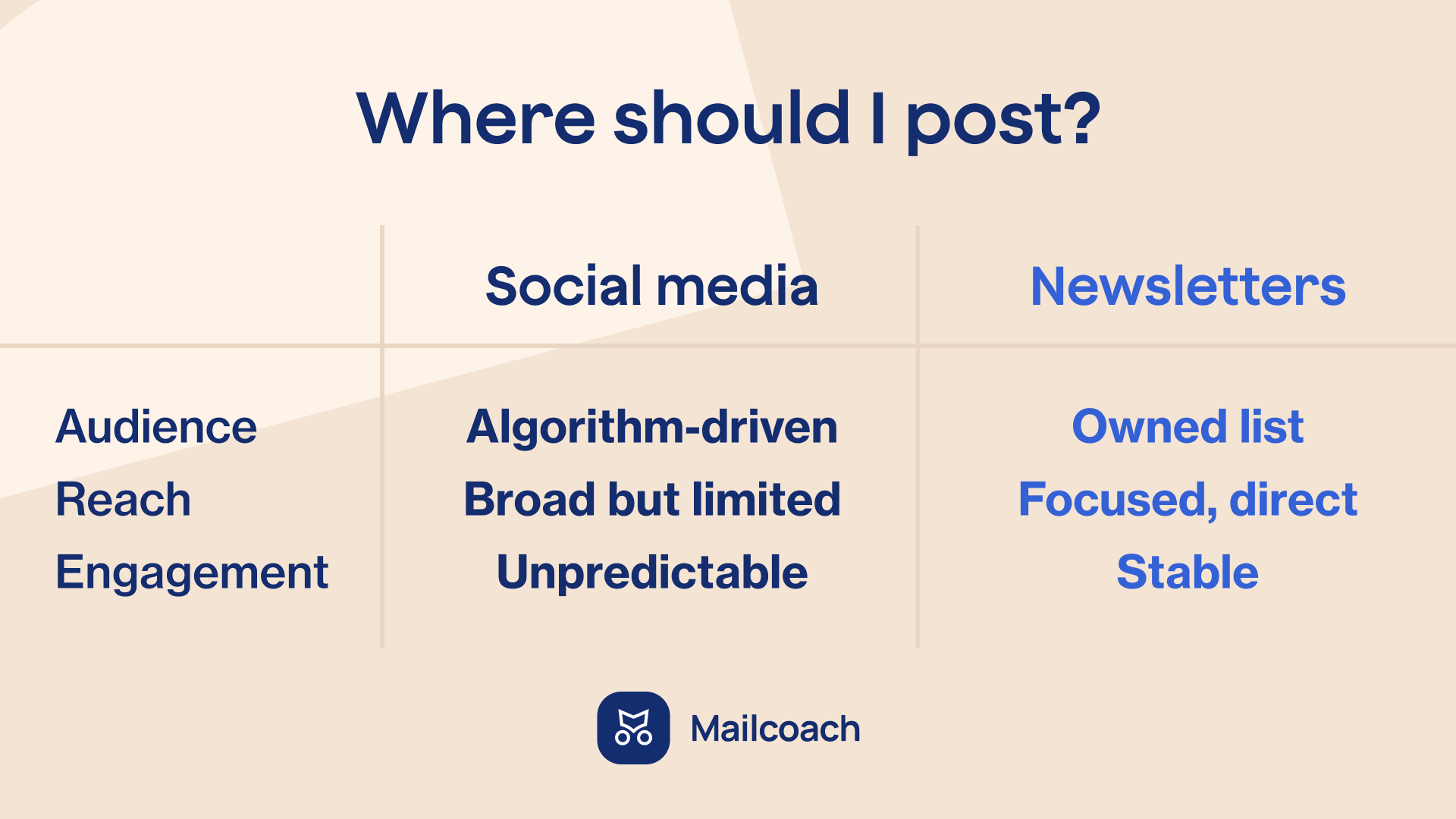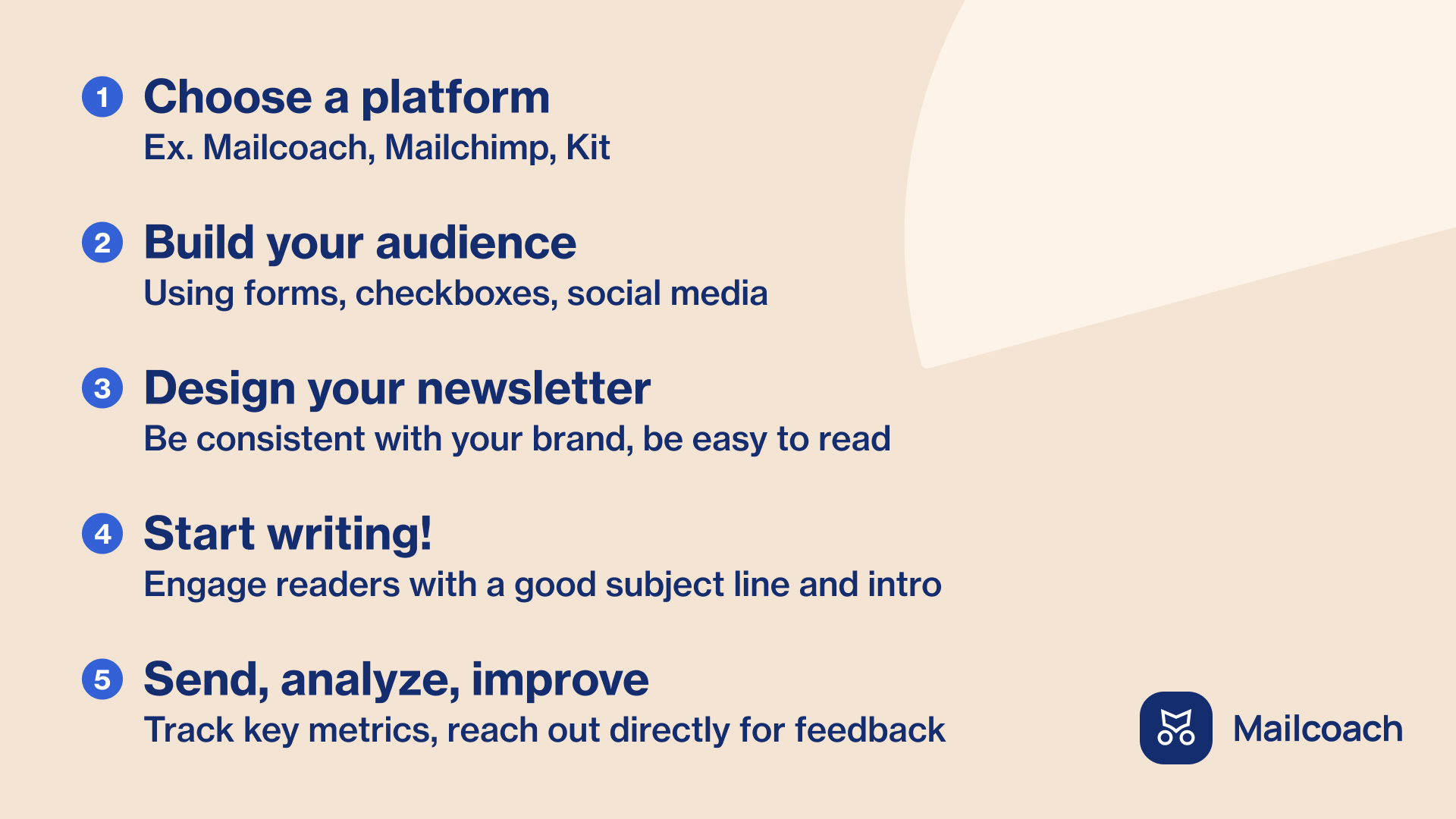With endless news and constant social media updates coming our way, a newsletter offers a great way to cut through the noise and connect with your audience on a more personal and direct level.
That said, while starting a newsletter can be exciting, it can also feel intimidating. With so many email newsletter providers to choose from, it’s not always clear which one is the right fit for you. The setup process can feel overwhelming—new technology, unfamiliar terminology, and a whole new way of doing things. This uncertainty can make it tempting to put off the decision or abandon the idea altogether.
Who should write a newsletter?
You may be a small or large business owner aiming to build brand awareness and promote your products or services.
Or you might be a content creator who would like to share content with your audiences.
You could also be a non-profit organization that wishes to keep your followers up to date with the goings on, all the while encouraging donations and volunteer participation.
Educators, publishers, authors, and creatives all need a way to reach their audience that goes beyond posts on social media or updates on the website.
Regardless of who you are, a newsletter might be just what you need to help you connect with your friends, followers, clients, or the general public.
Why should you write a newsletter?
A newsletter allows you to communicate directly with your audience. It’s a personal way to connect, share your thoughts, and provide valuable insights, whether on a personal level or a business one.
You may be tempted to build your audience only via social media platforms. While social media can be a powerful tool for reaching a broad audience, it comes with limitations. Algorithms control visibility, which means your carefully crafted posts might only reach a small fraction of your followers. More importantly, social media platforms are not under your control. Changes in policies or platform popularity can disrupt your ability to communicate with your audience.
By opting out of email marketing altogether, you might be missing out on the opportunity to build a direct line of communication with your audience. Unlike social media, where visibility is controlled by the platform itself and the algorithm it uses, an email newsletter will be delivered to your subscribers’ inboxes. This means that your audience is more likely to read and engage with your content.
Last but not least, by building an email newsletter, you own your audience list. This ownership offers long-term stability and control, regardless of how trends or platforms evolve. With careful planning and good-quality content, a newsletter can become a great tool to nurture relationships, drive engagement, and build a loyal community.

In this guide, we will walk from the initial idea to the launch of your newsletter. Get ready; we are in for a fun ride!
Define your purpose and audience
A good way to get started is to think about what topics your newsletter will cover. What will be your niche? What unique value will you provide? Who will your target audience be?
Clarifying your niche and audience will help you create content that aligns with your readers’ interests. This targeted approach will lead to higher open rates, stronger connections, and better newsletter performance.
Plan your content strategy
Planning your content strategy is important for creating a newsletter that engages and resonates with your audience.
Start by deciding on the type of content you will share, such as articles, tips, industry news, or interviews, depending on what aligns best with your goals.
Next, decide on the tone and style of your content. Whether professional, conversational, or informal, it needs to feel authentic to connect with your readers.
Think about how often you will send your newsletter. Weekly, bi-weekly, monthly, or on a situational basis; either is fine as long as you are clear on your expectations.
Finally, map out a rough content plan to ensure you are prepared with a steady flow of topics and ideas. This will help keep your content focused and engaging, and it will meet your audience’s expectations.
Build and grow your email list
To build a successful newsletter, you need a strategy to develop and grow your email list.
Start by creating an opt-in form that’s easy to access and fill out. Mailcoach has an example of such a form, which you can use on your website to accept subscriptions. You can also add subscribers by importing a list of contacts you may already have.
Encourage sign-ups, and offer incentives such as free resources, exclusive content, or discounts that might appeal to your target audience. These incentives will attract subscribers and help establish trust and value.
It’s equally as important to stay compliant with legal regulations, like GDPR, to protect your subscribers’ data. Make sure your newsletter includes an unsubscribe option and priorities privacy, making sure your readers feel secure and confident in their decision to join your list.
You can read more about Mailcoach’s GDPR and privacy policy on our website.
Design your newsletter
Designing your newsletter is all about making it look great while staying true to your brand. Start by choosing a clean, easy-to-read template that grabs attention.
Keep your brand consistent by matching fonts, colors, and your logo to create a familiar look that your readers will recognize.
Write and format content
Writing and formatting your newsletter content is where the magic happens. Start with an interesting subject line that hooks your readers and makes them want to open the email. Follow up with an introduction that sets the tone and draws them into the rest of the content.
Organizing your newsletter with clear headings and subheadings is good, as it makes it easy to scan and digest.
Finally, every newsletter should include a strong call to action (CTA) that encourages readers to engage—whether it’s clicking a link, replying to your email, or sharing your content.
Test your newsletter
Testing your newsletter before sending it out is essential to make sure everything looks and works perfectly. The last thing you want is to send an unchecked and untested newsletter to thousands of subscribers!
Start by sending test emails to yourself or your team to review both the content and visual design. This helps you catch formatting issues, layout problems, or anything that looks off on different devices. Mailcoach makes it easy as it provides the save and send test link you can click.
Take the time to proofread your content carefully, checking for spelling, grammar, and tone to maintain a professional impression. Don’t forget to verify all the links in your email to ensure they lead to the correct pages—Mailcoach even checks links for you automatically, making this step easier.
Once you have tested the delivery and the content of the newsletter, you are ready to send it to your audience!
Analyze and improve
The journey doesn’t stop by sending your first newsletter. It has only just begun. There are always ways you can improve your deliverability and statistics.
Improving your newsletter is about learning what works and making small tweaks along the way. Start by keeping an eye on key metrics like open rates, clicks, and unsubscribes to see how your readers are responding.
Don’t be shy about asking your subscribers for feedback—they will appreciate that you care about their experience.
Use what you learn to adjust your content, design, and sending schedule so your newsletter increases in value. Small improvements can make a big difference over time!

In closing
Starting a newsletter might feel a little bit overwhelming, but with the right approach, it can be a fun and rewarding way to connect with your audience. Once you’ve defined your purpose, planned your content, and designed a great-looking email, you’re well on your way. Don’t forget to test, learn from feedback, and keep improving. Every newsletter you send helps build stronger relationships with your readers.
So, take a deep breath, hit that “send” button, and enjoy sharing your stories, updates, and ideas — your audience is excited to hear from you!